Aspartate Aminotransferase (AST) Blood Test: Understanding High and Low Levels
What are normal AST levels in adults and children. How do doctors interpret AST test results. Why might a person have high or low AST levels. When should someone get an AST blood test.
What is Aspartate Aminotransferase (AST) and Why is it Important?
Aspartate aminotransferase (AST) is an enzyme primarily found in the liver, but also present in other organs such as the kidneys, heart, and muscles. This enzyme plays a crucial role in amino acid metabolism and is often used as a biomarker for liver health. When liver cells are damaged, AST is released into the bloodstream, causing elevated levels that can be detected through blood tests.
AST is also known by its alternative name, serum glutamic-oxaloacetic transaminase (SGOT). Understanding AST levels is essential for assessing liver function and identifying potential liver damage or other health issues.
Where is AST Found in the Body?
- Liver (highest concentration)
- Kidneys
- Heart
- Muscles
- Brain
Normal AST Levels: What’s Considered Healthy?
AST levels are typically measured in units per liter (U/L) or international units per liter (IU/L). While there isn’t an exact universal range for AST levels, as they can vary among individuals and still be considered normal, general guidelines exist for both adults and children.

For adults, normal AST levels typically range from 10 to 40 IU/L. In children, the normal range can be slightly different. It’s important to note that reference ranges may vary between laboratories due to different testing methods.
Factors Affecting AST Levels
Several factors can influence AST levels, including:
- Age
- Sex
- Weight
- Race
- Certain medications
Due to these variations, it’s crucial to interpret AST test results in conjunction with the specific reference range provided by the laboratory and under the guidance of a healthcare professional.
High AST Levels: Causes and Implications
Elevated AST levels can indicate various health issues, primarily related to liver function. When AST levels are higher than normal, it may suggest liver cell damage or other underlying conditions.
What Conditions Can Cause High AST Levels?
- Chronic hepatitis
- Alcohol-induced liver damage
- Cholestasis (decreased bile flow)
- Heart, kidney, bone, or muscle damage
- Liver cancer
- Liver cirrhosis (scarring)
- Acute hepatitis (very high levels >1,000 U/L)
In adults, AST levels above 36 U/L are generally considered high. Levels exceeding 1,000 U/L are very high and may indicate severe liver injury or acute hepatitis. For children, levels above 40 IU/L could suggest liver inflammation.

Are High AST Levels Always a Cause for Concern?
Not necessarily. Some individuals may have high AST levels without any other signs of health problems. Factors such as age, sex, race, and certain medications can influence AST levels. It’s essential to discuss any medications or health products with a healthcare provider to rule out potential interactions or effects on AST levels.
Low AST Levels: What Do They Mean?
While high AST levels often receive more attention, low AST levels can also indicate certain health conditions. Although less common, low AST levels may be associated with:
- Vitamin B6 deficiency
- Kidney disease
- Liver disease
- Cirrhosis
- Cancer
- Autoimmune conditions
- Genetic conditions
It’s important to note that low AST levels alone are not typically a cause for immediate concern. However, they should be interpreted in the context of other liver function tests and overall health assessment.
AST vs. ALT: Understanding the Difference
Alanine aminotransferase (ALT) is another liver enzyme often tested alongside AST. While both enzymes are indicators of liver health, they have some distinct characteristics:

- ALT is more specific to the liver than AST
- ALT occurs in higher concentrations in the liver
- AST is also found in significant amounts in other organs like the heart and muscles
How Do Doctors Interpret AST and ALT Results Together?
Comparing AST and ALT levels can provide valuable insights:
- If both AST and ALT are elevated, it may indicate a liver problem
- If AST is high but ALT is normal, it could suggest a health issue outside the liver or alcohol-induced liver damage
- The ratio of AST to ALT can help differentiate between various liver conditions
This combined analysis helps healthcare providers make more accurate diagnoses and treatment decisions.
When Should You Get an AST Blood Test?
AST blood tests are commonly recommended for screening, diagnosis, or monitoring purposes. A healthcare provider may suggest an AST test if:
- You have risk factors for liver disease (e.g., family history, obesity, diabetes)
- You’re experiencing symptoms of a liver problem (e.g., jaundice, fatigue, unexplained weight loss)
- You’re undergoing treatment for a liver condition and need to monitor its effectiveness
How is an AST Blood Test Performed?
The AST blood test is a straightforward procedure, similar to other blood tests. Here’s what you can expect:
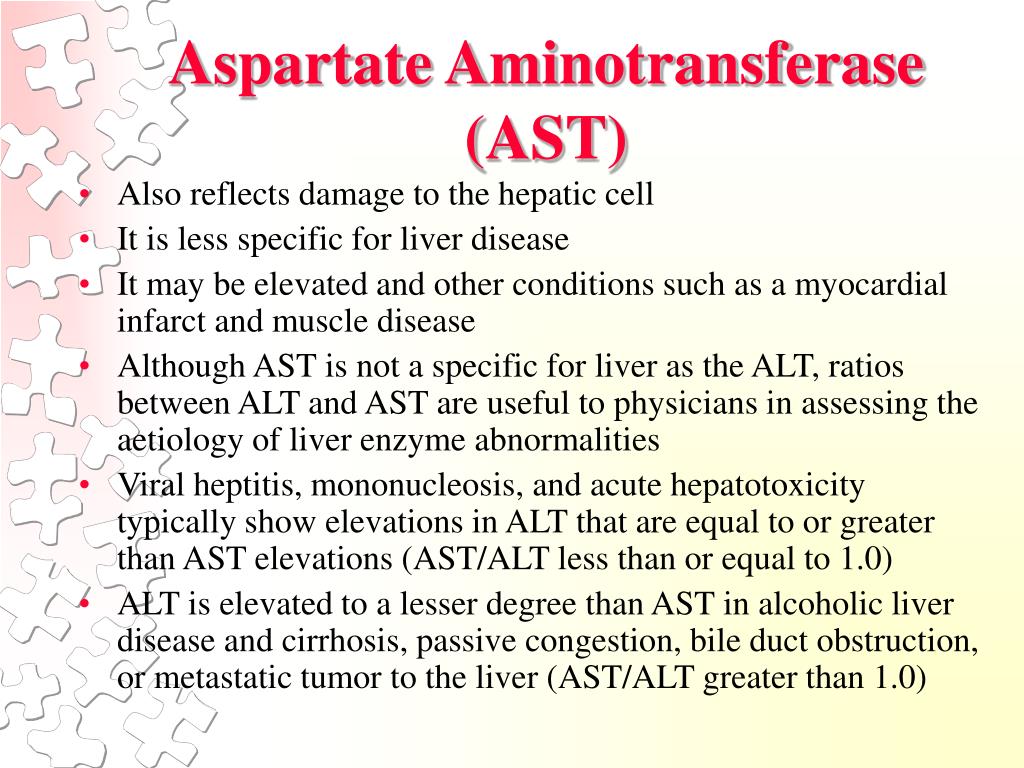
- A healthcare professional will ask you to sit down and tie a stretchy band around your upper arm to increase blood flow.
- They will clean the site of the blood draw with an antiseptic wipe.
- A needle will be inserted into a vein in your arm to collect a blood sample. You may feel a mild prick during this process.
- The blood sample will be sent to a laboratory for analysis.
The entire process usually takes only a few minutes, and you can typically resume normal activities immediately after the test.
Interpreting AST Test Results: What Do They Mean for Your Health?
Understanding AST test results requires careful consideration of various factors. Here’s how healthcare providers interpret these results:
Normal AST Levels
If your AST levels fall within the normal range (typically 10-40 IU/L for adults), it generally indicates that your liver is functioning properly. However, normal AST levels don’t entirely rule out all liver conditions, as some liver diseases may not cause elevated AST in their early stages.

High AST Levels
Elevated AST levels (above 36 U/L in adults or 40 IU/L in children) may suggest liver inflammation or damage. The degree of elevation can provide clues about the underlying cause:
- Mild elevation (1-3 times the upper limit of normal): May indicate chronic liver diseases, such as fatty liver disease or early-stage hepatitis
- Moderate elevation (3-20 times the upper limit of normal): Could suggest acute hepatitis, drug-induced liver injury, or alcoholic liver disease
- Severe elevation (>20 times the upper limit of normal): May indicate severe liver damage, such as acute viral hepatitis or ischemic hepatitis
Very High AST Levels
AST levels exceeding 1,000 U/L are considered very high and often indicate severe liver injury or acute hepatitis. These levels require immediate medical attention and further evaluation.
Low AST Levels
While less common, low AST levels can occur and may be associated with conditions such as vitamin B6 deficiency, kidney disease, or certain liver conditions. However, low AST levels alone are generally not a cause for immediate concern.
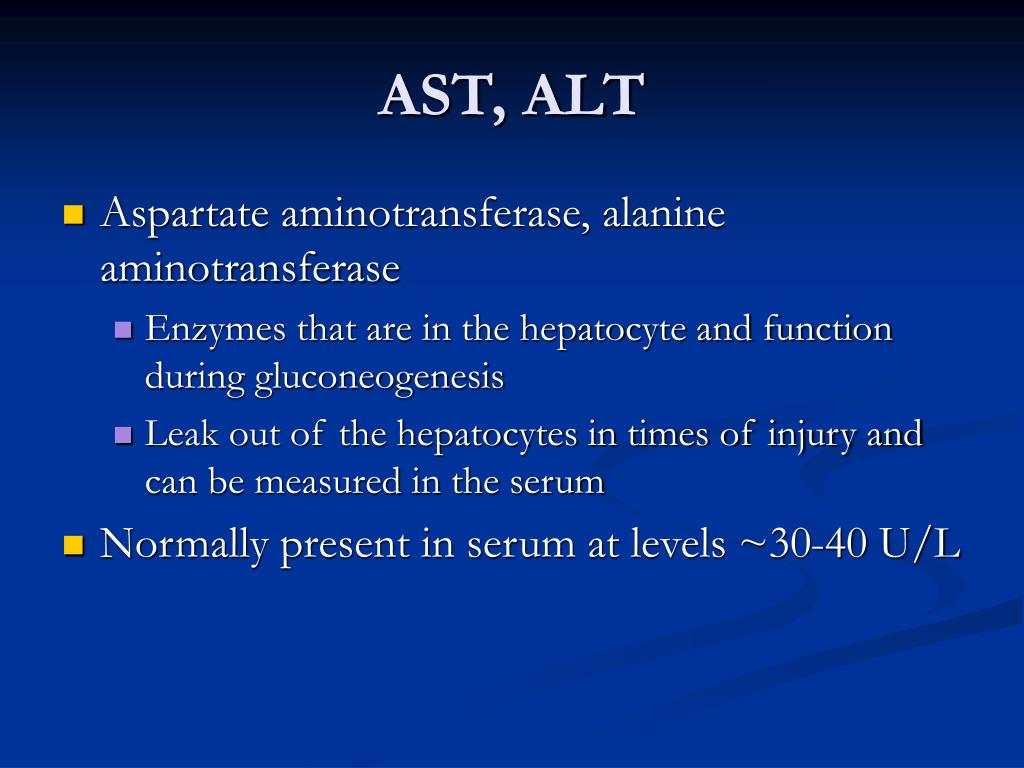
Beyond AST: Other Liver Function Tests
While AST is an important indicator of liver health, it’s often part of a broader panel of liver function tests. These additional tests provide a more comprehensive picture of liver health and function:
Alanine Aminotransferase (ALT)
ALT is another enzyme found primarily in the liver. Like AST, elevated ALT levels can indicate liver damage. The AST/ALT ratio can help differentiate between various liver conditions.
Alkaline Phosphatase (ALP)
ALP is an enzyme found in several organs, including the liver and bones. Elevated ALP levels may suggest bile duct obstruction or certain bone disorders.
Gamma-Glutamyl Transferase (GGT)
GGT is sensitive to alcohol consumption and can help detect alcohol-related liver damage. It’s often used in conjunction with AST and ALT to provide a more complete picture of liver health.
Bilirubin
Bilirubin is a yellowish pigment produced when red blood cells break down. Elevated bilirubin levels can cause jaundice and may indicate liver or bile duct problems.
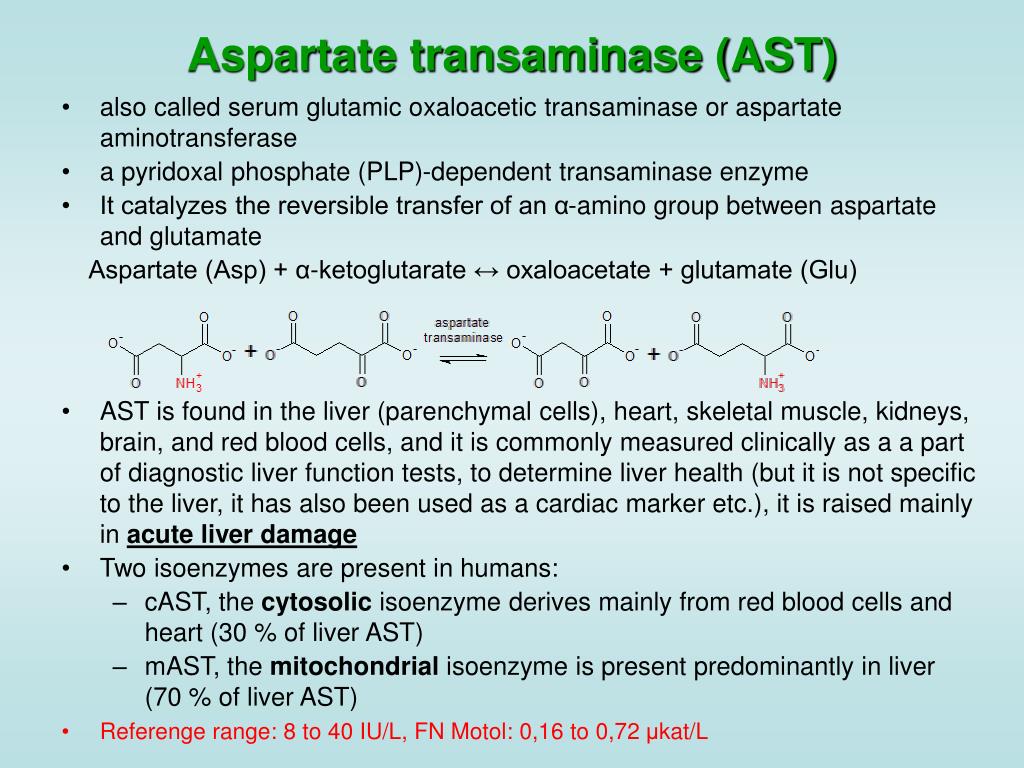
Albumin
Albumin is a protein produced by the liver. Low albumin levels may suggest advanced liver disease or malnutrition.
Lifestyle Factors That Can Affect AST Levels
Several lifestyle factors can influence AST levels, either directly or indirectly through their impact on liver health:
Alcohol Consumption
Excessive alcohol intake can lead to alcoholic liver disease, causing elevated AST levels. Even moderate drinking can temporarily increase AST levels in some individuals.
Diet and Nutrition
A balanced diet rich in fruits, vegetables, and whole grains can support liver health. Conversely, a diet high in processed foods and saturated fats may contribute to fatty liver disease and elevated AST levels.
Exercise
Regular physical activity can help maintain a healthy weight and reduce the risk of fatty liver disease. However, intense exercise can temporarily elevate AST levels due to muscle breakdown.
Medications and Supplements
Certain medications and herbal supplements can affect liver function and AST levels. Always inform your healthcare provider about all medications and supplements you’re taking.
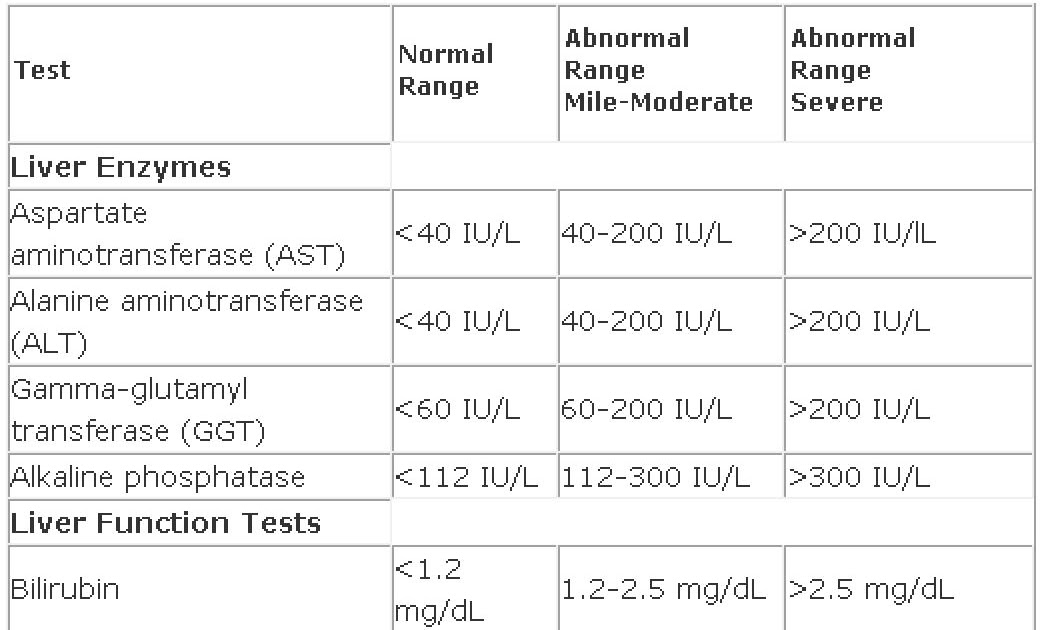
Weight Management
Obesity is a risk factor for non-alcoholic fatty liver disease (NAFLD), which can lead to elevated AST levels. Maintaining a healthy weight through diet and exercise can help prevent liver problems.
Managing High AST Levels: Treatment and Prevention
If you have high AST levels, your healthcare provider will work with you to identify the underlying cause and develop an appropriate treatment plan. Here are some general strategies for managing high AST levels and promoting liver health:
Lifestyle Modifications
- Limit or avoid alcohol consumption
- Maintain a healthy weight through diet and exercise
- Eat a balanced diet rich in fruits, vegetables, and whole grains
- Avoid or limit processed foods and saturated fats
- Stay hydrated by drinking plenty of water
Medication Management
Your healthcare provider may adjust your medications or recommend alternatives if certain drugs are contributing to elevated AST levels. Never stop or change medications without consulting your doctor first.

Treating Underlying Conditions
If an underlying health condition is causing high AST levels, treating that condition is crucial. This may involve medications, lifestyle changes, or other interventions depending on the specific diagnosis.
Regular Monitoring
Your healthcare provider may recommend periodic AST tests to monitor your liver function and assess the effectiveness of treatment.
Avoiding Hepatotoxic Substances
Limit exposure to substances that can damage the liver, such as certain chemicals, pesticides, and excessive amounts of acetaminophen.
The Future of Liver Health Assessment: Beyond AST
While AST remains an important biomarker for liver health, researchers are continually exploring new methods to assess liver function and detect liver diseases earlier and more accurately. Some promising areas of research include:
Non-Invasive Imaging Techniques
Advanced imaging technologies, such as elastography and magnetic resonance imaging (MRI), are being developed to assess liver fibrosis and steatosis without the need for invasive biopsies.
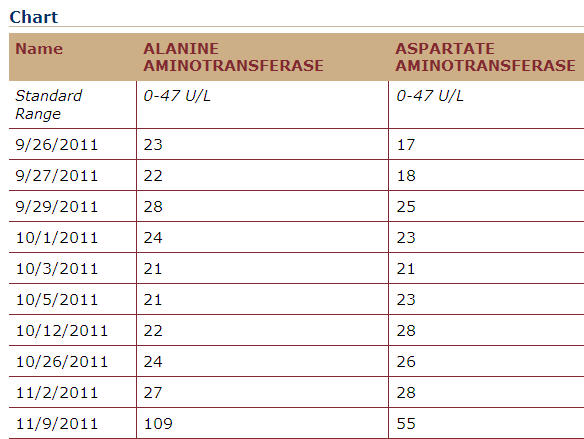
Novel Biomarkers
Researchers are investigating new blood-based biomarkers that may provide more specific information about liver health and disease progression. These include markers of fibrosis, inflammation, and oxidative stress.
Genetic Testing
Advances in genetic testing may help identify individuals at higher risk for certain liver diseases, allowing for earlier intervention and personalized treatment strategies.
Artificial Intelligence and Machine Learning
These technologies are being applied to analyze complex data from multiple sources, potentially improving the accuracy of liver disease diagnosis and prognosis.
As our understanding of liver health continues to evolve, the role of AST in assessing liver function will likely be complemented by these emerging technologies and approaches. However, AST remains a valuable and widely used tool in the evaluation of liver health.
Conclusion: The Importance of AST in Liver Health Assessment
Aspartate aminotransferase (AST) is a crucial enzyme in assessing liver health and function. Understanding AST levels, their normal ranges, and what elevated or lowered levels might indicate is essential for both healthcare providers and patients. While AST is an important biomarker, it’s typically interpreted alongside other liver function tests and clinical information to provide a comprehensive picture of liver health.
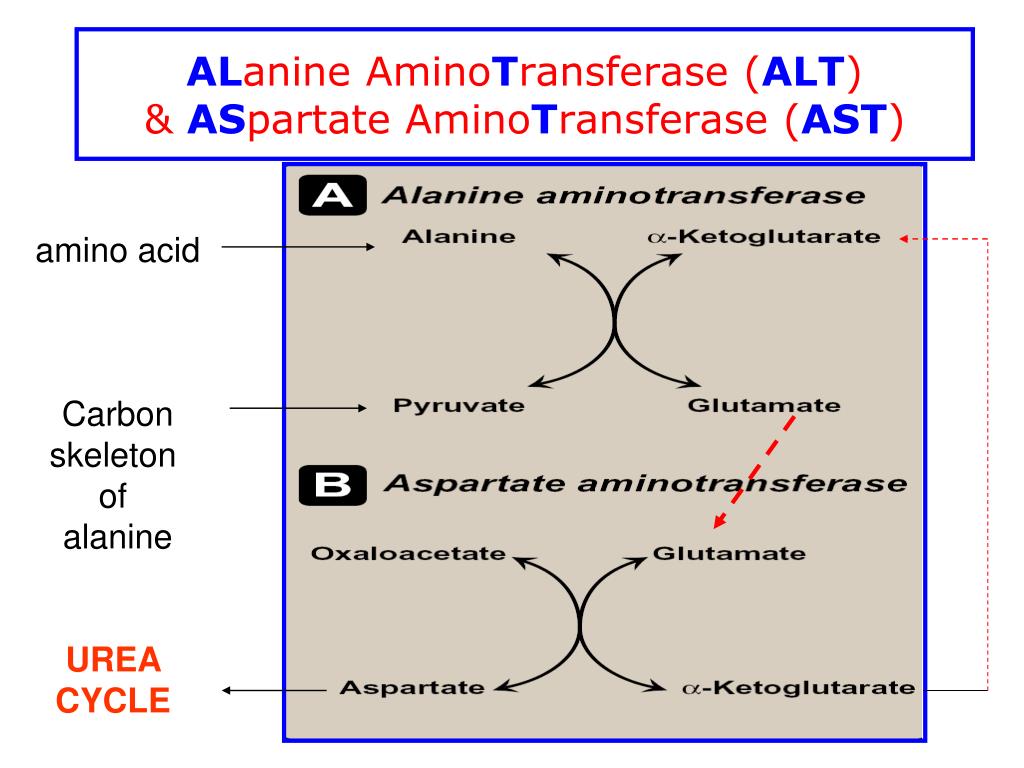
Regular monitoring of AST levels, especially for individuals with risk factors for liver disease, can help detect potential liver problems early. This early detection, combined with appropriate lifestyle modifications and medical interventions, can significantly improve outcomes for those with liver conditions.
As research in liver health assessment continues to advance, new technologies and biomarkers may complement or even surpass AST in certain aspects of liver function evaluation. However, AST remains a fundamental tool in the diagnostic and monitoring toolkit for liver health.
If you have concerns about your liver health or AST levels, it’s crucial to consult with a healthcare professional. They can provide personalized advice, interpret your test results in the context of your overall health, and recommend appropriate follow-up actions or treatments if necessary.
Remember, maintaining a healthy lifestyle, including a balanced diet, regular exercise, limited alcohol consumption, and avoiding hepatotoxic substances, is key to supporting liver health and potentially preventing liver-related issues. By staying informed about liver health indicators like AST and working closely with healthcare providers, individuals can take proactive steps to maintain optimal liver function and overall well-being.

